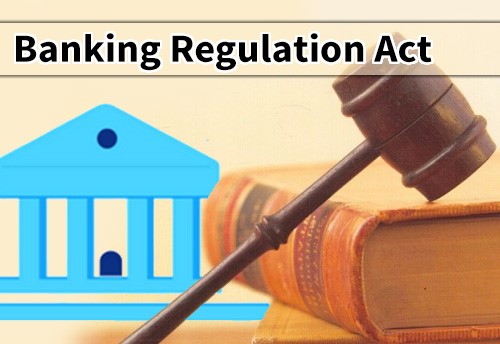Free Courses Sale ends Soon, Get It Now


Free Courses Sale ends Soon, Get It Now



Disclaimer: Copyright infringement not intended.
Context
The Banking Regulation Act, 1949
Overview
Key Provisions
Powers Granted to RBI
Amendment in 1965
Features of the Banking Regulation Act, 1949
Important Provisions of the Banking Regulation Act, 1949
Shortcomings of the Banking Regulation Act, 1949
Amendments to the Banking Regulation Act, 1949
2020 Amendment
What is the significance of Section 35A of the Banking Regulation Act?
Important Sections in Banking Regulation Act 1949
|
Section Number |
Description |
|
7 |
Use of words “bank”, “banker”, “banking” or “banking company”. |
|
10BB |
Power of Reserve Bank to appoint chairman of the Board of directors appointed on a whole-time basis or a managing director of a banking company. |
|
11 |
Requirement as to minimum paid-up capital and reserves. |
|
12 |
Regulation of paid-up capital, subscribed capital and authorised capital and voting rights of shareholders. |
|
15 |
Restrictions as to payment of dividend. |
|
17 |
Reserve Fund. |
|
18 |
Cash reserve. |
|
20 |
Restrictions on loans and advances. |
|
21 |
Power of Reserve Bank to control advances by banking companies. |
|
21A |
Rates of interest charged by banking companies not to be subject to scrutiny by courts. |
|
22 |
Licensing of banking companies. |
|
23 |
Prohibits banks from opening a new place of business(branches) in India or abroad, change of premises otherwise than within the same city, change otherwise than within the town or village, without prior approval of RBI. |
|
24 |
Statutory Liquidity Ratio. |
|
26 |
Every banking company to submit an annual return to RBI in respect of all accounts in India which have not been operated upon for 10 years. |
|
29 |
Accounts and balance-sheet. |
|
35A |
Power of the Reserve Bank to give directions. |
|
36AA |
Power of Reserve Bank to remove managerial and other persons from office. |
|
36AB |
Power of Reserve Bank to appoint additional directors. |
|
36AE |
Power of Central Government to acquire undertakings of banking companies in certain cases. |
|
36AF |
Power of the Central Government to make scheme. |
|
39 |
Reserve Bank to be official liquidator. |
|
46 |
Penalties. |
|
47A |
Power of Reserve Bank to impose penalty. |
|
49 |
Special provisions for private banking companies. |
|
49A |
Restriction on acceptance of deposits withdrawable by cheque. |
|
49B |
Change of name by a banking company. |
|
51 |
Application of certain provisions to the State Bank of India and other notified banks. |
|
52 |
Power of Central Government to make rules. |
|
56 |
Act to apply to co-operative societies subject to modifications. |
The important sections in the Banking Regulation Act 1949 related to RBI's Prompt Corrective Action (PCA) include:
Conclusion
|
PRACTICE QUESTION Q. Explain the importance of the Banking Regulation Act, 1949, in regulating banking companies in India. How do the Act's restrictions prevent fraud and protect depositors' interests? Evaluate its effectiveness in ensuring the stability of the banking sector. |
© 2024 iasgyan. All right reserved